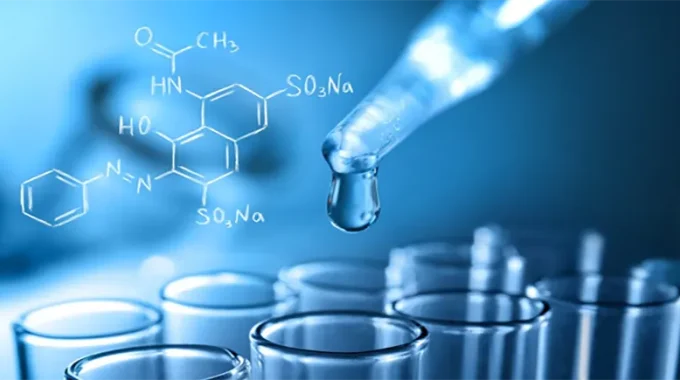The development of pharmacy in Indonesia is a story that intertwines indigenous practices, colonial influences, and early modern advancements. From its roots in ancient herbal traditions to the establishment of formal pharmaceutical institutions during the colonial period, Indonesia’s pharmaceutical history reflects a rich tapestry of cultural and scientific evolution. This article explores the early development of pharmacy in Indonesia, focusing on indigenous practices, the impact of colonialism, and the formative years of modern pharmaceutical practices. Visit pafikotabantul.org
Indigenous Herbal Medicine
- Traditional Practices
Long before the arrival of European powers, Indonesia had a well-established system of traditional medicine, prominently featuring herbal remedies. Known as Jamu, this system utilized the vast array of indigenous plants, herbs, and spices found across the archipelago. Jamu practitioners, often herbalists or shamans, used these natural ingredients to treat various ailments and maintain health.
Traditional Jamu practices are rooted in ancient Indonesian cultures, with knowledge passed down through generations. Key herbs such as ginger (Zingiber officinale), turmeric (Curcuma longa), and tamarind (Tamarindus indica) were commonly used for their medicinal properties. This herbal tradition emphasized holistic health, incorporating physical, mental, and spiritual aspects of well-being.
- Cultural Significance
Jamu held significant cultural value in Indonesian society. It was not merely a system of medicine but also an integral part of daily life, rituals, and customs. Traditional healers, known as “dukun,” played a crucial role in their communities, providing health care based on both empirical knowledge and spiritual beliefs.
Colonial Influence
- Dutch Colonial Era
The arrival of the Dutch East India Company (VOC) in the early 17th century marked a new chapter in Indonesian pharmacy. The Dutch initially focused on trade and control but soon recognized the importance of healthcare for their colonial administration and workforce. This led to the introduction of Western medicine and pharmacy practices in Indonesia.
The Dutch established several medical institutions, such as hospitals and dispensaries, to provide Western-style healthcare. These facilities were primarily intended for European settlers and colonial officials but gradually began serving the local population. The introduction of Western medicine brought new pharmaceutical practices and drugs to Indonesia, creating a dual system of traditional and modern medicine.
- Regulation and Standardization
During the colonial period, the Dutch implemented regulations to control the pharmaceutical market. They introduced policies to standardize medicines and ensure their quality, laying the groundwork for modern pharmaceutical practices. This included the regulation of drug manufacturing and distribution, which was a significant shift from the more informal practices of traditional medicine.
The Dutch also established educational institutions to train pharmacists and medical professionals. The School of Medicine (Stovia) in Batavia (now Jakarta), founded in 1851, played a pivotal role in this regard. It provided formal training in Western medicine and pharmacy, creating a new generation of Indonesian professionals who were familiar with both traditional and Western practices.
Early Modern Developments
- Post-Colonial Changes
After Indonesia gained independence in 1945, the country embarked on a journey to modernize its healthcare system. The early years of independence saw a continuation of the dual medical system, with both traditional practices and Western medicine coexisting. However, there was a growing emphasis on formalizing and modernizing pharmaceutical practices.
The newly established Indonesian government undertook several initiatives to advance the pharmaceutical sector. This included the establishment of regulatory bodies and the development of national policies to ensure the quality and safety of pharmaceutical products. The integration of traditional and modern practices continued, with efforts to preserve and document indigenous knowledge while embracing scientific advancements.
- Growth of Pharmaceutical Education
The post-independence era also saw the expansion of pharmaceutical education. New institutions were established to train pharmacists and medical professionals, building on the legacy of colonial-era schools. The focus was on providing a comprehensive education that included both traditional herbal medicine and modern pharmaceutical sciences.
In 1961, the Indonesian Pharmacists Association (IAI) was founded to promote the interests of pharmacists and advance the profession. The IAI played a crucial role in shaping the pharmaceutical landscape, advocating for professional standards, and supporting the development of pharmacy education and practice.
Challenges and Opportunities
- Integration of Traditional and Modern Medicine
One of the ongoing challenges in Indonesian pharmacy is balancing traditional and modern practices. Traditional herbal medicine remains popular and is widely used alongside modern pharmaceuticals. The challenge is to integrate these practices in a way that ensures safety, efficacy, and quality. Efforts to research and validate traditional remedies, as well as regulatory measures to oversee their use, are crucial in this regard.
- Development of the Pharmaceutical Industry
The growth of the pharmaceutical industry presents both opportunities and challenges. The industry has seen significant development, with local and international companies manufacturing and distributing a wide range of pharmaceutical products. However, ensuring the quality and safety of these products remains a key concern. Regulatory frameworks and quality control measures are essential for maintaining high standards in the industry.
- Preservation of Indigenous Knowledge
The preservation of indigenous knowledge is another important aspect of early pharmaceutical development. As modern practices continue to evolve, it is essential to document and protect traditional knowledge and practices. This includes supporting research into traditional remedies and incorporating them into contemporary healthcare practices where appropriate.
Conclusion
The early development of pharmacy in Indonesia reflects a rich and complex history that spans indigenous traditions, colonial influences, and modern advancements. From the ancient practices of Jamu to the introduction of Western medicine during the colonial era, Indonesia’s pharmaceutical landscape has evolved significantly. The integration of traditional and modern practices continues to shape the field, presenting both challenges and opportunities for the future. As Indonesia moves forward, the preservation of its rich medicinal heritage and the advancement of pharmaceutical practices will play a crucial role in shaping the country’s healthcare system.












